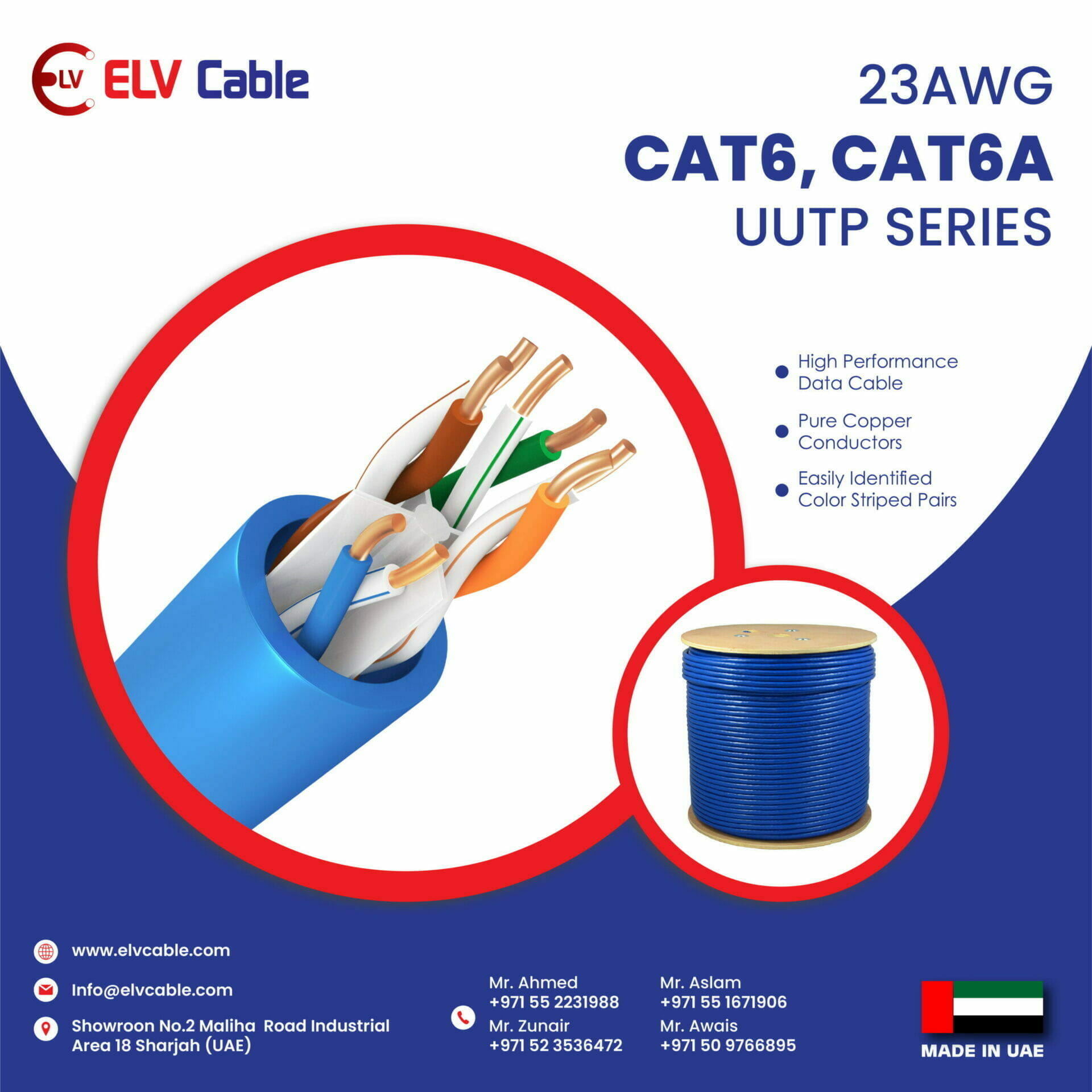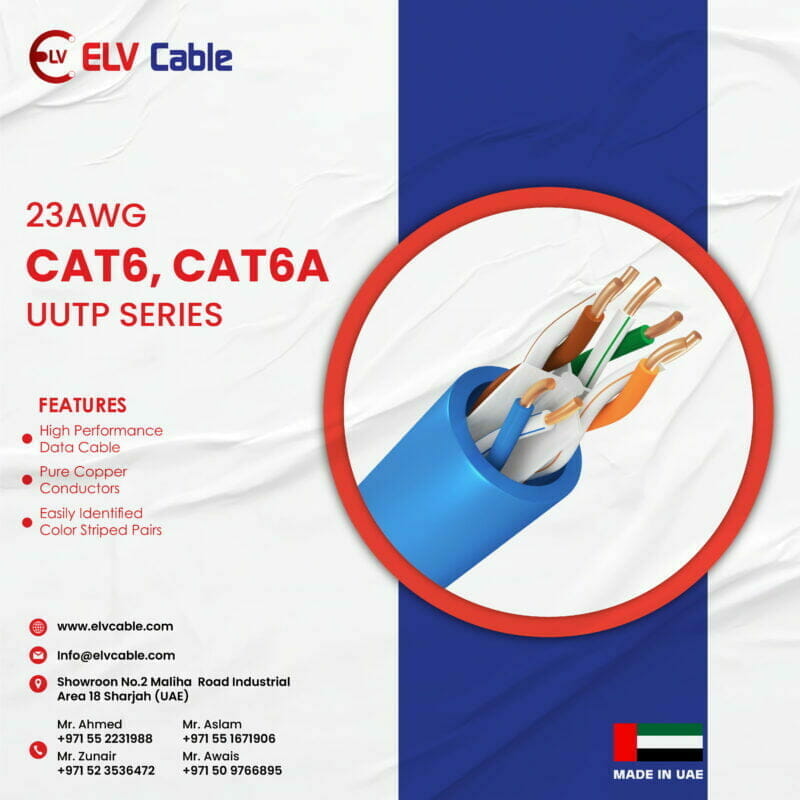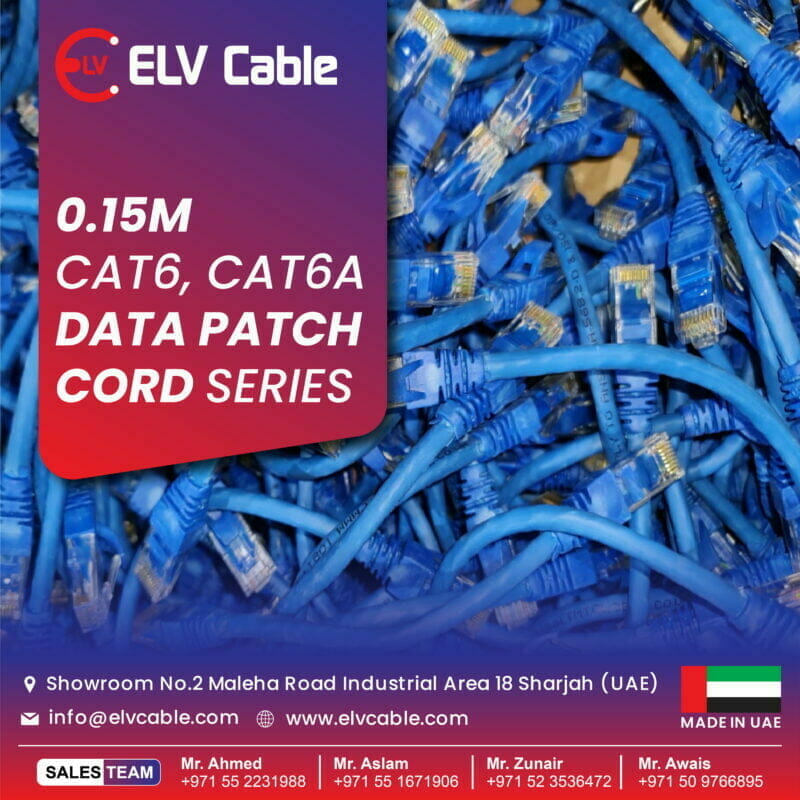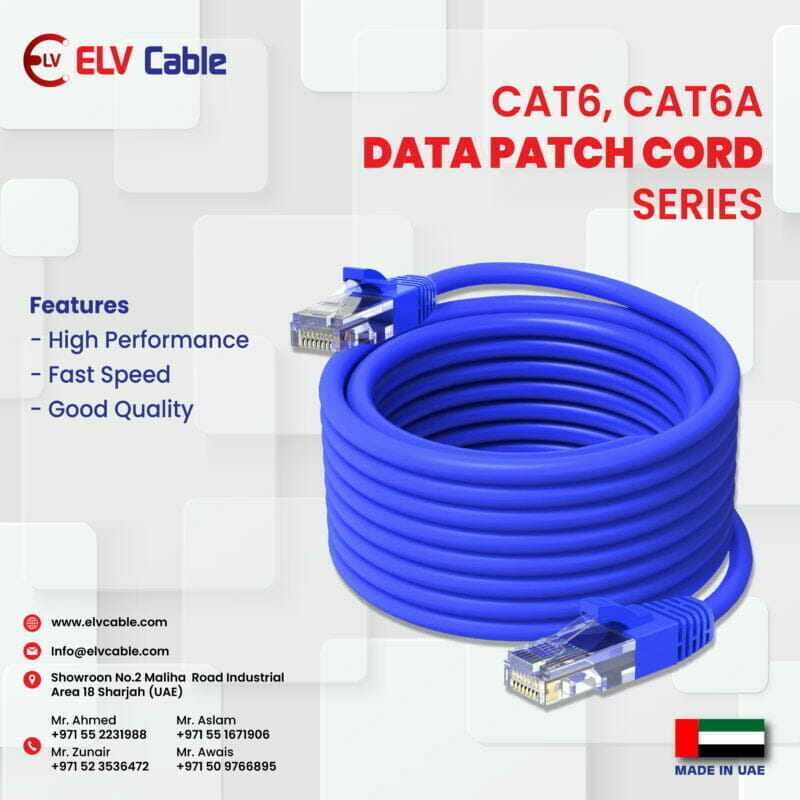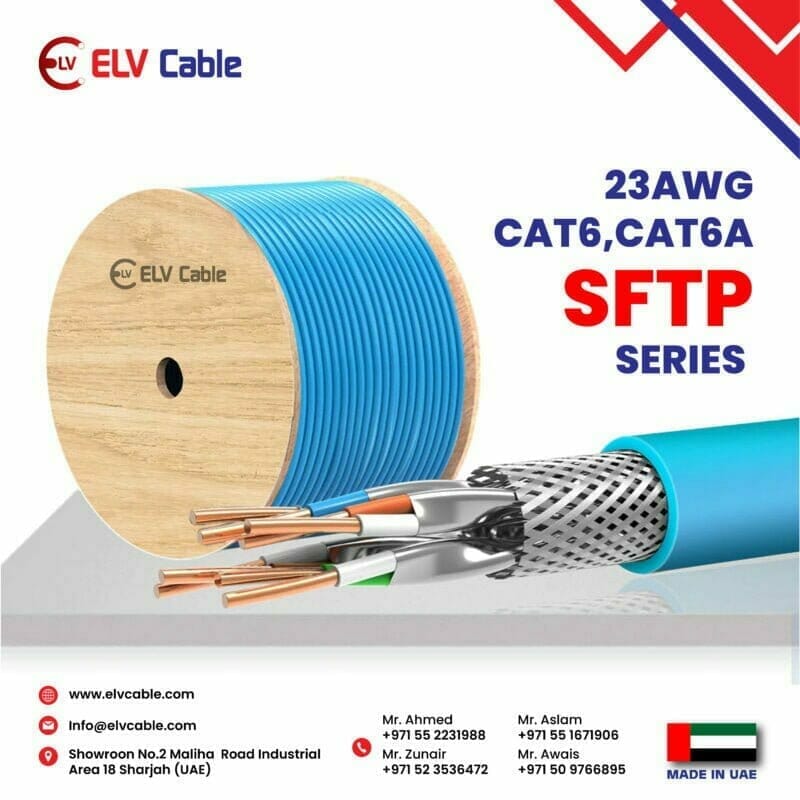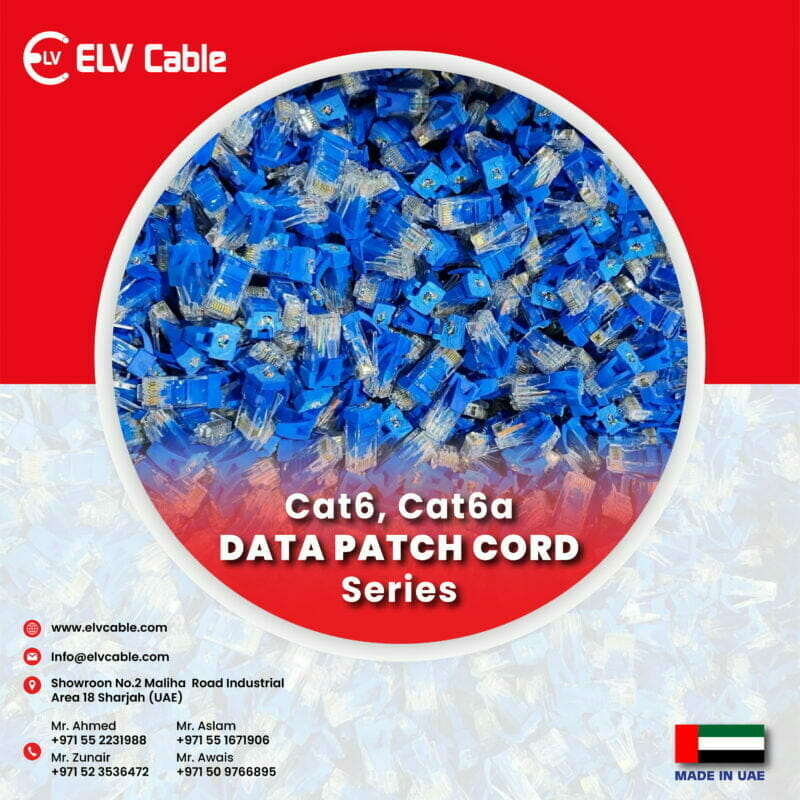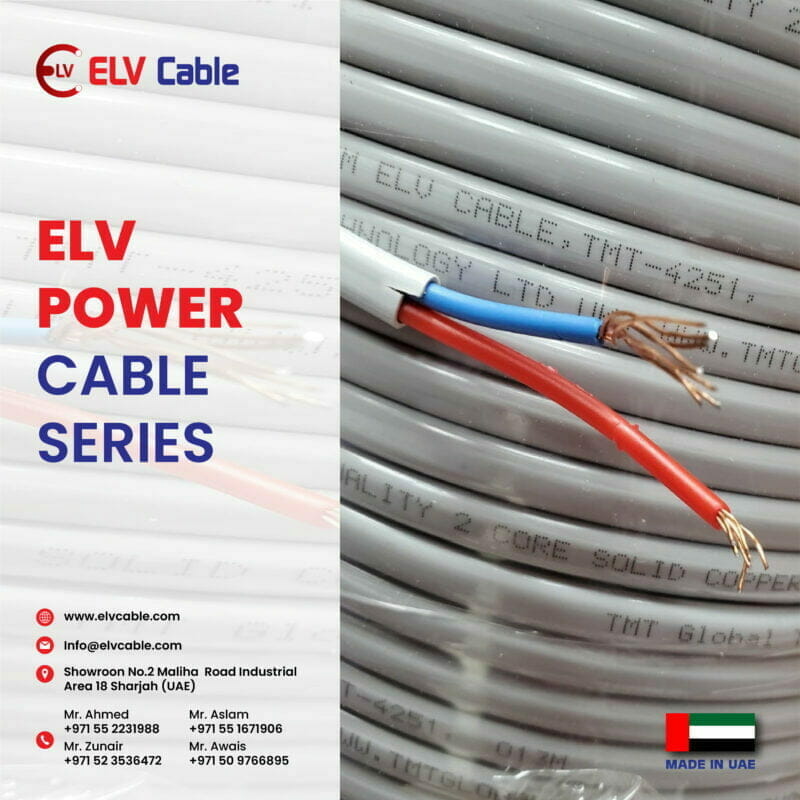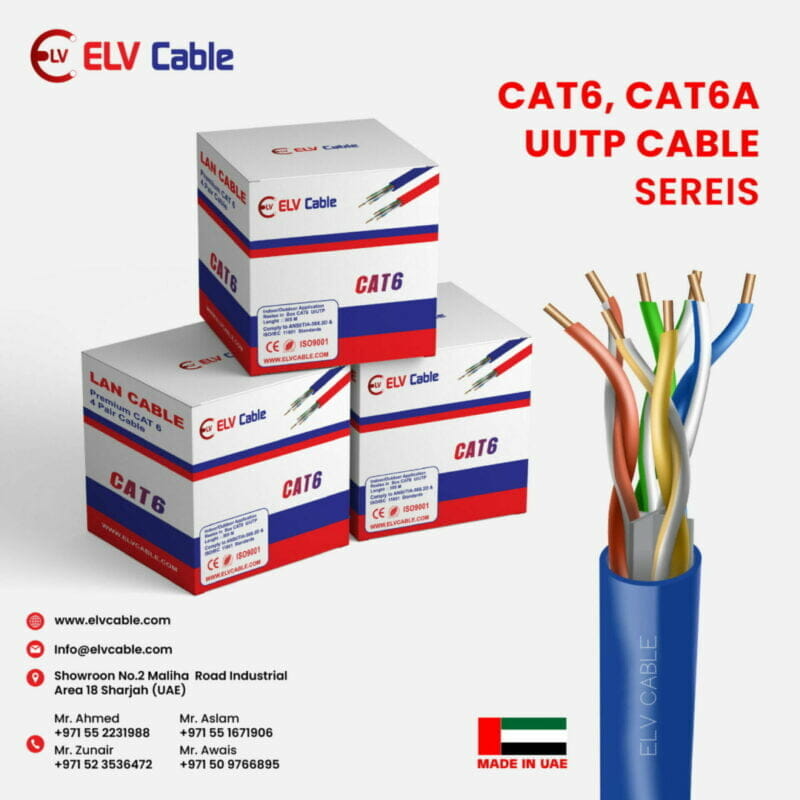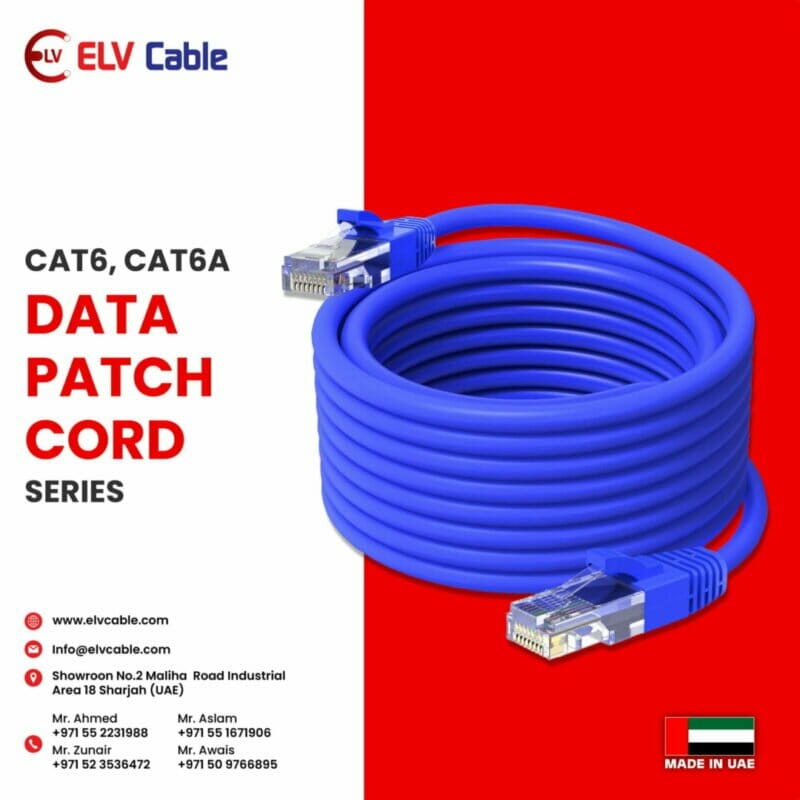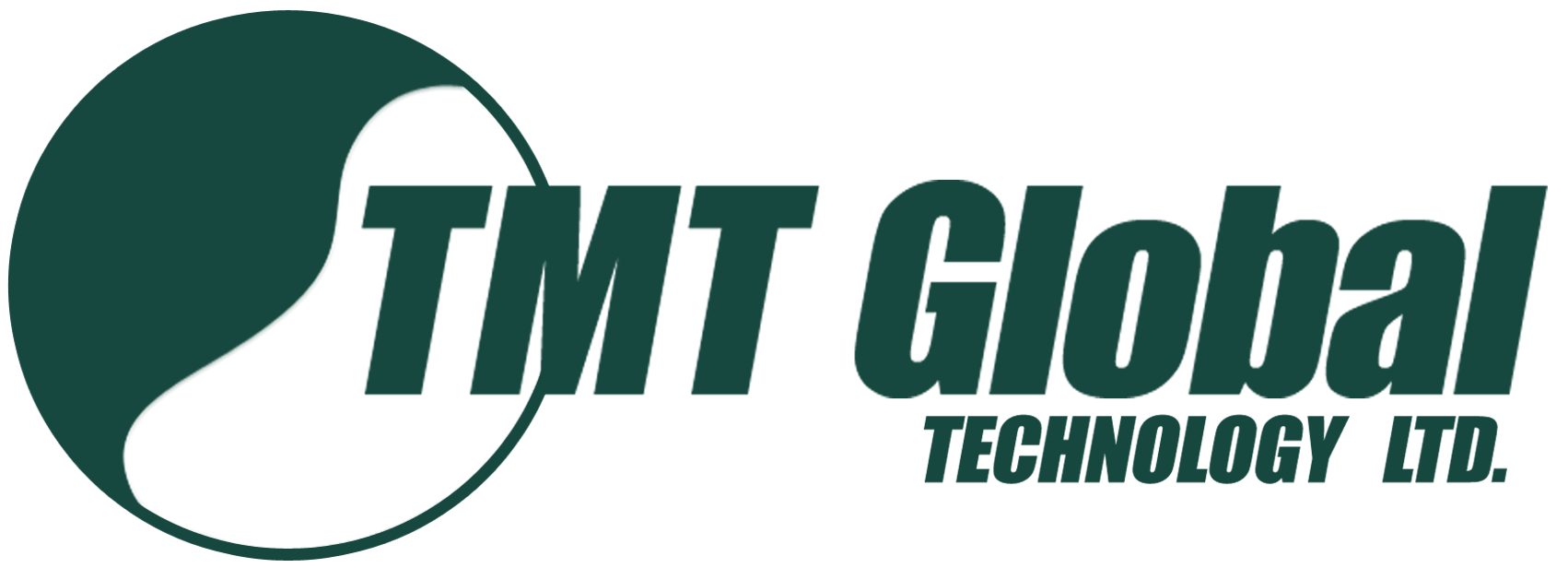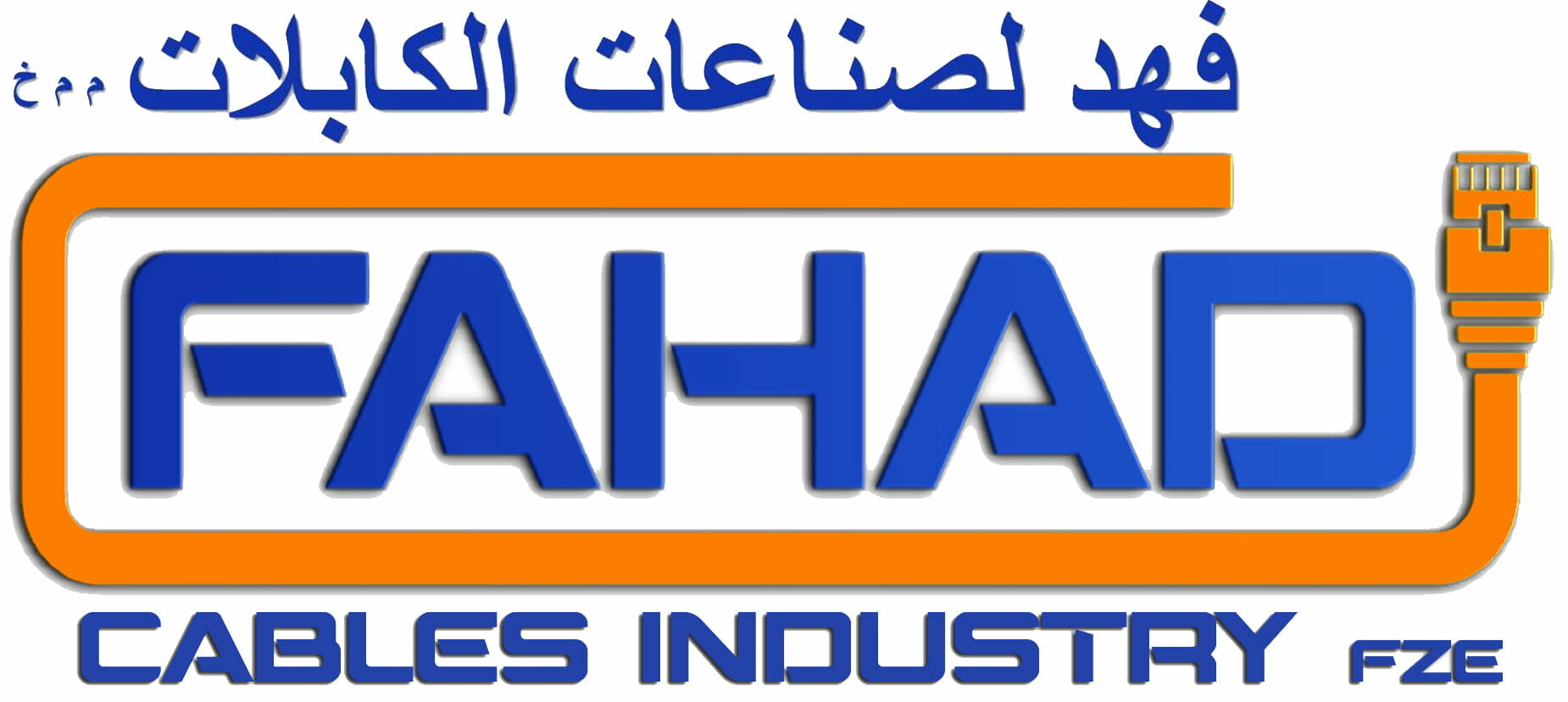Understanding Cat5e Ethernet Cable Manufactured by ELV Cables
Introduction to Cat5e Ethernet Cable
Cat5e Ethernet cable, short for Category 5 enhanced, is a widely recognized standard for twisted-pair cables designed to improve data transmission performance. These cables facilitate high-speed networking, providing a robust solution for both residential and commercial connectivity needs. The key purpose of Cat5e cables is to enable reliable data transfer rates of up to 1 Gbps over distances of up to 100 meters, making them suitable for a variety of networking applications.
One of the significant advantages of Cat5e Ethernet cables is their ability to reduce crosstalk, which refers to the interference caused by signals from adjacent wires. This enhancement is critical in maintaining data integrity, especially in environments where multiple devices are interconnected. The Cat5e standard offers better performance than its predecessor, Cat5, by allowing for higher frequencies of operation—up to 100 MHz. This improvement is essential for businesses and individuals seeking to manage large volumes of data efficiently.
In comparison to other categories of Ethernet cables, such as Cat6 and Cat6a, Cat5e stands out for its balance of cost-effectiveness and performance. While Cat6 cables can support higher bandwidths and greater distances, they are generally more expensive and may not be necessary for many standard applications. Cat5e cables tend to be favored in environments that require basic networking functionalities without the need for the additional capabilities and costs associated with higher-category cables.
The widespread adoption of Cat5e Ethernet cables can be attributed to their versatility. They are extensively used in home office setups, small businesses, and larger enterprise networks. As the demand for reliable high-speed data transmission continues to grow, the Cat5e Ethernet cable remains a popular choice for ensuring stable and efficient network connectivity across various settings.
ELV Cables: A Trusted Manufacturer
ELV Cables has established itself as a prominent manufacturer in the Ethernet cable industry, particularly known for its Cat5e Ethernet cables. Founded with a vision to provide high-quality and reliable cabling solutions, the company has progressively evolved to become a key player in the sector. With years of experience, ELV Cables has honed its expertise in the production of Ethernet cables, gaining trust from both individual consumers and large enterprises.
The reputation of ELV Cables is built on an unwavering commitment to quality. The company employs stringent manufacturing processes and quality control measures to ensure that every cable meets or exceeds industry standards. By adhering to globally recognized specifications, ELV Cables is able to deliver products that ensure optimal performance for various applications, from home networking to industrial communications.
In addition to its focus on quality, ELV Cables prides itself on its dedication to innovation. The company consistently invests in research and development to incorporate the latest technology and advancements into their product offerings. This forward-thinking approach not only assures customers of the reliability of their Ethernet cables but also positions ELV Cables as a company that embraces the evolving demands of the tech industry.
Furthermore, ELV Cables holds several certifications that bolster its credibility as a manufacturer. These include compliance with international standards such as ISO 9001, which focuses on the quality management systems. Such certifications reaffirm the company’s commitment to maintaining high standards of production and provide customers with the assurance that they are purchasing a reliable product. With a combination of experience, innovation, and rigorous quality assurance, ELV Cables continues to enjoy a respected position in the Ethernet cable market.
Technical Specifications of Cat5e Cables
Cat5e Ethernet cables are engineered to meet specific technical parameters that ensure their efficiency in networking applications. One of the most critical specifications is the data transfer speed. Cat5e cables support a maximum data transmission rate of up to 1 Gbps (Gigabit per second) over distances of 100 meters (328 feet). This capability makes them suitable for high-speed internet connections and local area networks (LANs) where speed is a priority.
The maximum cable length for effective data transmission is another vital specification. While the standard maximum length is 100 meters, exceeding this limit can lead to signal degradation and reduced performance. It is essential to adhere to this limitation to maintain optimal data integrity and transfer speeds during network operations.
Frequency rating is another significant factor. Cat5e cables are designed to operate at frequencies of up to 100 MHz. This frequency range is crucial as it affects the data capacity and rate at which information can be transmitted. Higher frequencies allow for better performance in terms of the number of signals that can be carried simultaneously, reducing latency and improving overall networking efficacy.
Additionally, Cat5e cables incorporate various shielding options that enhance their performance in different environments. Unshielded Twisted Pair (UTP) and Shielded Twisted Pair (STP) are the two primary shielding types. UTP cables are common in everyday networking, whereas STP cables provide extra shielding from electromagnetic interference (EMI), making them ideal for installations in electrically noisy environments. The choice between these options is important and depends on the specific networking requirements and situations faced by users.
In conclusion, understanding the technical specifications of Cat5e Ethernet cables, such as data transfer speeds, maximum cable length, frequency, and shielding options, can significantly influence their effectiveness in various networking setups. By selecting the appropriate cable type, users can ensure reliable connectivity and optimized network performance.
Benefits of Using Cat5e Ethernet Cable
The Cat5e Ethernet cable, a significant advancement over its predecessor, the Cat5 cable, offers myriad benefits that enhance connectivity and internet performance. One of the primary advantages is its cost-effectiveness. When compared to higher-category cables such as Cat6 or Cat6a, Cat5e provides stringent performance at a lower price point, making it an ideal choice for both home and office environments where economical solutions are crucial.
Support for fast internet speeds is another key benefit of Cat5e cables. They are capable of delivering data transmission speeds of up to 1 Gbps, which aligns well with the requirements of most modern networking applications. This capability is particularly valuable in settings where multiple devices, such as computers, smart TVs, and gaming consoles, require stable and quick connections simultaneously. As internet speeds continue to rise globally, using Cat5e cables ensures users are not left behind.
Furthermore, Cat5e cables exhibit enhanced performance in terms of reduced crosstalk—interference between wires within the cable—which can degrade network speed and reliability. By adhering to stringent standards, Cat5e minimizes this issue, resulting in clearer communication and more reliable networks. This is especially beneficial in scenarios such as offices with multiple nearby workstations or in densely populated areas where wireless signals may be easily disrupted.
In practical terms, deploying Cat5e Ethernet cables in a home network can significantly improve online gaming experiences, streaming quality, and the efficiency of telecommuting solutions. High-definition video streaming and rapid file transfers become more manageable, yielding a better user experience overall. Whether for large enterprises or small home setups, the combination of affordability, speed, and performance makes Cat5e Ethernet cables an optimal choice for various networking needs.
Installation and Best Practices
Installing Cat5e Ethernet cables requires a methodical approach to ensure optimal performance and longevity. First, it is essential to plan the installation by mapping out the route the cables will take. This includes identifying entry and exit points, avoiding potential interference from electrical lines, and selecting hardware such as wall plates and connectors that are compatible with the cable type. When determining the length of the cables, it is essential to keep runs under 100 meters to maintain performance standards.
Once you have planned the setup, begin by ensuring that you have all the necessary tools on hand, such as a cable tester, crimping tool, and wire stripper. Using high-quality materials, including the Cat5e cable itself, connectors, and tools will help reduce the risk of performance issues later. It is also suggested to use solid copper wires rather than copper-clad aluminum for better conductivity.
When terminating the cables, follow the T568A or T568B wiring standards consistently. Avoid untwisting the cable pairs excessively, as the twisting helps reduce interference and maintain signal integrity. After crimping, always test the connections using a cable tester to verify that the installation is correct and fully operational.
Another best practice is to provide adequate strain relief on both ends of the cable to prevent any stress that could cause connection issues over time. Avoid running cables through areas where they could be pinched or damaged, such as under heavy furniture or doors. Additionally, consider using cable management solutions like raceways or cable ties to keep the installations organized and secure.
By adhering to these guidelines, you will optimize the installation of Cat5e Ethernet cables, thereby enhancing network reliability and reducing the likelihood of future issues. Proper installation and attention to these best practices will ensure that your Cat5e Ethernet cables perform to their fullest potential.
Common Applications of Cat5e Cables
Category 5e (Cat5e) Ethernet cables are widely utilized in various environments due to their balance of performance and cost-effectiveness. One primary application is in home networking. In residential setups, Cat5e cables facilitate connections between devices such as routers, switches, computers, and gaming consoles. For instance, connecting a smart TV to a home network using Cat5e enables streaming high-definition content, ensuring minimal lag and buffering.
In office environments, Cat5e cables are essential for establishing reliable network infrastructure. They typically connect computers to network hubs and switches, facilitating data exchange and internet access. Devices like VoIP phones and printers also benefit from using Cat5e cables, as they provide stable connections crucial for smooth operation. With the growing trend of remote work, many home offices now rely on Cat5e technology to support video conferencing and collaborative work applications that demand consistent connectivity.
Data centers significantly utilize Cat5e cables for networking due to their ability to handle high-speed data transmission. In these environments, Cat5e cables interconnect servers, storage devices, and networking equipment, thereby enhancing overall data flow and communication efficiency. This is especially critical for businesses managing large quantities of data or requiring swift access to cloud services. Additionally, many Internet Service Providers employ Cat5e cables for their connections to residential and commercial customers, demonstrating the cable’s pivotal role in modern networking solutions.
In summary, Cat5e Ethernet cables support a diverse range of applications across home, office, and data center environments, enhancing connectivity and enabling seamless communication between multiple devices. Their versatility makes them a staple in network infrastructure, addressing both individual and organizational needs for reliable internet access and data transmission.
Comparison with Other Ethernet Cable Types
When navigating the landscape of Ethernet cables, understanding the distinctions among the various types available can significantly impact network performance and cost-efficiency. The Cat5e Ethernet cable, a popular choice for many consumers, has its own set of advantages and disadvantages when compared to newer standards like Cat6 and Cat6a.
The Cat5e cable, an enhanced version of the original Cat5, supports speeds up to 1 Gbps (Gigabit per second) and a bandwidth of 100 MHz. This is sufficient for most residential and small business applications, especially for basic internet browsing, streaming, and online gaming. However, it does have limitations. It performs optimally over shorter distances, typically up to 100 meters, which means users requiring higher performance over long distances may want to explore other options.
On the other hand, Cat6 cables offer a significant leap in performance, capable of supporting speeds up to 10 Gbps with a bandwidth of 250 MHz. The increased capacity makes Cat6 an ideal choice for environments where higher data transmission rates are a necessity, such as data centers and enterprise settings. Despite its advantages, Cat6 cables can be more expensive and may require more careful installation due to increased crosstalk and interference.
Cat6a, an augmented version of Cat6, takes things a step further by offering speeds up to 10 Gbps while maintaining performance over longer distances, up to 100 meters. This makes it particularly suitable for future-proofing networks, but it comes with a stiffer design that may complicate installation in tight spaces.
Ultimately, choosing between Cat5e, Cat6, and Cat6a depends on specific needs, budget, and intended application. For everyday use in a home or small office, Cat5e may suffice. However, for those anticipating future bandwidth needs or requiring high-speed data transfer, investing in Cat6 or Cat6a cables could be more beneficial.
Maintenance and Troubleshooting
Regular maintenance of Cat5e Ethernet cables is crucial to ensure optimal performance and longevity. These cables are designed to facilitate high-speed data transmission; however, environmental factors and usage can lead to wear and potential issues. Maintenance begins with periodic visual inspections. Check for signs of wear, such as frayed or exposed wires, kinks, or severe bends. Additionally, ensure that connectors are securely attached and free from corrosion. Keeping the cables organized and avoiding tangling can further prevent physical damage.
Troubleshooting common issues often begins with assessing the connection. If you encounter slow connectivity or dropped signals, the first step is to verify that the cables are firmly plugged into their respective ports. Reconnect them to eliminate any potential contact issues. If problems persist, testing the cable using a cable tester can reveal defects. A faulty Cat5e cable may result in intermittent connectivity or signal degradation, which can often be traced back to a break or short in the wire.
Another common issue that may arise is electromagnetic interference (EMI) from nearby devices. This can severely impact data transmission speeds. To mitigate this problem, maintain a suitable distance between Ethernet cables and other electrical devices, particularly high-power appliances. Additionally, if the environment in which the cables are used is prone to moisture or extreme temperatures, consider relocating or replacing them with a more suitable cable type designed for such conditions.
Ultimately, the longevity of Cat5e cables depends on both maintenance and proactive troubleshooting. If frequent issues arise or visible wear is detected, it may be time to consider replacing the cables. Regularly assessing the condition of your Ethernet infrastructure not only enhances performance but also helps prevent significant downtime.
Conclusion: The Value of Cat5e by ELV Cables
In the ever-evolving realm of networking technology, the choice of cable can significantly influence performance and reliability. The Cat5e Ethernet cables manufactured by ELV Cables stand out as a leading option for both residential and commercial applications. Throughout this discussion, we have explored the exceptional features that these cables offer, affirming their status as a dependable choice for network infrastructure.
One of the key advantages of the Cat5e cables offered by ELV Cables is their enhanced transmission capabilities. With support for speeds up to 1 Gbps and bandwidth up to 100 MHz, these cables facilitate smooth data transfer, making them ideal for high-speed internet and data-heavy applications. Additionally, ELV Cables’ commitment to quality ensures that their Cat5e products comply with industry standards, providing users with a level of assurance regarding performance and durability.
Moreover, the construction and materials utilized in the manufacturing of Cat5e cables by ELV contribute to their superior performance. Insulation and shielding techniques applied in these cables mitigate interference and crosstalk, thereby enhancing the overall network reliability. The flexibility in installation further makes these cables suitable for various environments, whether it’s a home, office, or data center.
Choosing the right Ethernet cable is crucial for achieving optimal network performance. ELV Cables not only meets this need with their Cat5e products but also provides a trusted source for those seeking quality networking solutions. By opting for ELV Cables, consumers can be confident in their decision, knowing they are investing in superior technology that supports their networking requirements efficiently and effectively.

